Pioneer in Electrophysiology Award Past Recipients
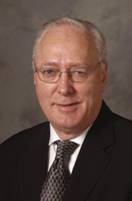 Professor John Camm, MD
Professor John Camm, MD
John Camm is Professor of Clinical Cardiology at St George’s Hospital Medical School, University of London, UK, and Professor of Cardiology at Imperial College, London. His interests include cardiac arrhythmias, atrial fibrillation, stroke prevention, anticoagulation, clinical cardiac electrophysiology, cardiac pacemakers, and risk stratification in post-myocardial infarction, heart failure and cardiomyopathy patients.
Professor Camm is Editor of the European Society of Cardiology Textbook of Cardiovascular Medicine, Electrophysiology of the Heart, Clinical Cardiology and Evidence Based Medicine. He has written or edited more than 40 books, predominantly in the field of cardiac arrhythmology. He has authored or co-authored almost 1300 peer reviewed papers, more than 500 book chapters, and in excess of 2500 accepted abstracts. He has delivered more than 500 international lectures.
Professor Camm has been involved in the production of numerous guidelines, including the ESC guidelines for the management of atrial fibrillation and the NICE guidelines for the treatment of unstable angina and non-ST elevation ACS. Professor Camm was awarded the ESC Gold Medal in 2005 and the British Cardiovascular Society Mackenzie Medal in 2008.
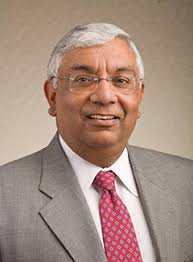 Sanjeev Saksena, MBBS, MD
Sanjeev Saksena, MBBS, MD
Sanjeev Saksena, MBBS, MD was born in Delhi, India in 1952. His early education was obtained in both India and Edinburgh, Scotland, graduated in Medicine from the All India Institute of Medical Sciences, New Delhi, specialized in Internal Medicine at SUNY, Stony Brook and Cardiology/Electrophysiology at the University of Miami Medical Center. In 1980 he established the first comprehensive cardiac electrophysiology program in New Jersey at the Newark Beth Israel Medical Center – UMDNJ Medical School in Newark. In his 37 year career in New Jersey, he has established and held institutional leadership positions in Adult Cardiac Electrophysiology at 4 institutions, Pediatric Electrophysiology at the Children’s Hospital of New Jersey, Adult Cardiology, Cardiovascular Research and Education and led the Cardiovascular Institute at Atlantic Health Systems (East). In 1982, he founded the Electrophysiology Research Foundation, the first stand alone non-profit private Research Foundation devoted solely to research and education in cardiac electrophysiology, which remains actively involved in this field for 35 years. He is currently Professor of Medicine at the Rutgers’-Robert Wood Johnson Medical School, New Jersey, Medical Director and Trustee of the Electrophysiology Research Foundation, and Founding Editor and Editor in Chief of the Journal of Interventional Cardiac Electrophysiology.
Dr. Saksena’s early experiences shaped his subsequent research career. As a medical student he worked on high altitude circulatory physiology with first mentor, Professor Sujoy B. Roy and later in residency and fellowship on myocardial function in acute myocardial infarction, electrophysiological studies in ventricular tachycardia under the guidance of Drs. Augustin Castellanos and Robert Myerburg and in 1981, co-authored the pivotal study on the posterior anatomic location of slow AV nodal pathway with Dr. Sung that led to the development of selective slow AV nodal pathway ablation. In his basic and clinical electrophysiologic laboratories in New Jersey, pioneering research studies in non-pharmacologic therapies for tachycardias established momentum in this new direction in antiarrhythmic therapy in the early 1980s. He published pivotal studies in experimental, technologic and early concept clinical investigations in the nascent fields of ventricular defibrillation and surgical and catheter ablation with laser and radiofrequency energy. His early proof of concept studies developed the technique of simultaneous bidirectional shocks culminating in the first successful human implant of an implantable defibrillator with a triple electrode system without a thoracotomy in 1987 and anti-tachycardia pacing as the first line of therapy for ventricular tachycardia in device algorithms. Their group examined the hemodynamics of ventricular tachycardia in man in the mid-1980s and in collaboration with Dr. Navin Nanda performed the first echocardiographic imaging studies to examine ventricular function in this arrhythmia.
Important clinical studies were led by this group such as the first pacemaker-defibrillator device investigation, newly developed transvenous endocardial defibrillation leads that are precursors of all such leads today, comparison of thoracotomy and transvenous defibrillator implant methods and the first report of defibrillation lead performance and failures. Other early Investigations in the next five years established the superiority of biphasic shocks in transvenous defibrillation, and subcutaneous thoracic electrode mapping of the chest, leading to the development of the active pectoral can electrode. The triple electrode configuration, biphasic shocks and pectoral can/ subcutaneous thoracic electrodes remain part of clinical defibrillator implant techniques in 2017.
An early investigator of Dr. Schienman’s technique of direct current catheter ablation of the AV junction in 1984, he became intrigued by the use of alternative energy sources for ablation and demonstrated the successful use of laser energy for ablation in AV nodal, AV reentrant and ventricular tachycardia and new catheter delivery methods of radiofrequency energy in the late 1980s.
In the 1990s their group turned their attention to device based therapies of atrial fibrillation, developed high frequency pacing for termination and dual site atrial pacing for prevention of atrial fibrillation. He pioneered the technique of dual site right atrial pacing and established its adjunctive role in long term management of drug refractory atrial fibrillation in combination with drug and ablative approaches.
Another important area of study involved study of the mechanisms in human atrial fibrillation. His early studies first reported in 1999 and reaffirmed in subsequent publications till 2005 promoted a bi-atrial origin of the arrhythmia, with drivers from multiple right and left atrial sites varying in complexity with AF subtypes, differing significantly from the prevailing concepts. Recent studies with advancing sophisticated mapping systems now support these ideas. These pioneering ideas were recognized with the grant of several patents for these therapeutic techniques. Recent studies examine the value of atrial resynchronization in atrial reverse remodeling and heart failure with preserved systolic function.
He has been a clinical trialist for three decades and has designed and executed major clinical trials at the NHLBI and for FDA approval of antiarrhythmic therapies. As a pioneering investigator, he became a key planner and held leadership roles in pivotal clinical trials in clinical electrophysiology such as AVID, AFFIRM, and MADIT 1. In 1998, he reported the key observation that implantable defibrillator recipients with decreased left ventricular function in the AVID trial derived superior survival benefit over antiarrhythmic drugs, an observation that drove generations of ICD trials for the next decade and remains a key criterion in current patient selection. More recently his interest in heart failure studies has focused on “diastolic” heart failure, development of the TOPCAT study and the impact of atrial fibrillation and antiarrhythmic interventions in this form of heart failure. He has been instrumental in development of practice guidelines for ICD therapy, standards for catheter ablation, nomenclature in defibrillation and tachycardia classification, and proposed the generic term “ICD” in 1987, which was adopted in scientific parlance.
Dr. Saksena has authored 350 peer reviewed journal articles, over 425 abstracts, 86 book chapters.co- edited 6 textbooks, 10 journal supplements and three reference textbooks. He has been a member of NIH study sections, and chaired several clinical trials including DAPPAF, HIPPAF, ICE-CHIP, CAFÉ AMIGO and ENTICED-AF. In 1990, in conjunction with Berndt Luderitz, he coined the concept of Interventional Cardiac Electrophysiology as a defined scientific discipline with quadrennial international meetings devoted to cutting-edge research in this subject over the next 20 years. In 1996, he founded the Journal of Interventional Cardiac Electrophysiology devoted to original research in this area, cementing this new scientific discipline. Today, interventional cardiac electrophysiology dominates the clinical activities of practitioners of cardiac electrophysiology worldwide.
He has been a consultant to governmental and private organizations, a Founding member of the European Cardiac Arrhythmia Society, co-founder of the Indian Heart Rhythm Society and has a long record of public service. He founded and led the Government Relations Committee at the national society, established early health economic investigations, payment codes and standards in electrophysiology and health care advocacy for practitioners in this specialty. He served as President of the North American Society of Pacing and Electrophysiology in 1998, whose restructuring into the Heart
Rhythm Society and global strategic direction was initiated during his tenure. He has been a recipient of Distinguished Scientific Achievement awards from numerous international societies. His trainees now supervise electrophysiology programs or are cardiology faculty members in three continents. He has been annually included in the listing of “America’s Top Cardiologists”, New Jersey Top Doctors and recognized by the cardiovascular device industry for these contributions.
He is an internationally renowned scientist and widely sought speaker and maintains a global presence in the field. Dr. Saksena’s breadth and depth of pioneering contributions have been instrumental in founding and developing interventional cardiac electrophysiology by advancing new concepts and techniques that have become part of current day practice. His pivotal clinical investigations, enormous energy in disseminating scientific knowledge in this field worldwide, and expanding the horizons of electrophysiologic therapies in cardiac disease have led colleagues to refer to him as a “Founder of modern electrophysiology”. He remains active in clinical practice and scientific investigation in New Jersey.
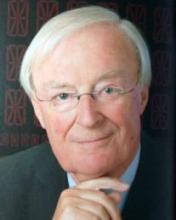 Hein J. Wellens, MD
Hein J. Wellens, MD
Hein J. Wellens, MD was born November 13, 1935 in The Hague in the Netherlands. He studied medicine at the University of Leiden.
In the late sixties, at the University Hospital of Amsterdam, he started to investigate patients with cardiac arrhythmias by placing catheters into the heart allowing the recording of cardiac activation at different sites. By connecting these catheters to a pacing device, he showed that it was possible not only to initiate and terminate the clinically occurring cardiac arrhythmias but also to localize the site of origin of the arrhythmia and to discover its mechanism. By using this approach, called programmed electrical stimulation of the heart, Dr. Wellens not only unravelled mechanisms and localization of arrhythmias in the Wolff-Parkinson-White syndrome, but also of the other types of supra ventricular tachycardias.
In the early seventies, a major breakthrough came when he showed that programmed electrical stimulation of the heart could also be used to study the mechanism and localization of ventricular tachycardia, opening new ways for its treatment. In 1971 he published “Electrical stimulation of the heart in the study and treatment of tachycardias”, the first book on invasive management of patients with tachycardias.
In 1973 Dr. Wellens was appointed Professor of Cardiology at the University of Amsterdam. At that time it became clear that this new approach allowed the investigation of the effect of drugs on the tachycardia mechanism and the development of new therapeutic strategies such as the termination of tachycardias by specially designed pacemakers, the surgical removal or isolation of the tachycardia substrate and ultimately cure from cardiac arrhythmias by catheter ablation.
The work of Dr. Wellens has not only been the basis for the way arrhythmias are currently investigated and treated, but by carefully analyzing electrocardiographic recordings in relation to information from programmed stimulation of the heart, he opened new ways to use the electrocardiogram as a reliable (non-invasive) source to become informed about the site of origin and mechanism of a cardiac arrhythmia.
Dr. Wellens left Amsterdam in 1977 to become Professor and Chairman of the Department of Cardiology at the Academic Hospital of the new Maastricht University. There he created his school of arrhythmology, educating in the period 1977-2001 more than 130 cardiologists from all over the world. Many of them, after returning to their home country, became internationally known leaders in cardiology.
Dr. Wellens, who also directed from 1993 to 2003 the Interuniversity Cardiological Institute of the Netherlands (ICIN), an Institute of the Royal Netherlands Academy of Arts and Sciences, in which the Dutch research activities in cardiovascular research are combined at the national level. He wrote or co-authored over 660 peer-reviewed articles, 254 chapters in books, and was author or (co) editor of 21 books on cardiology.
In his scientific career dr. Wellens made several important contributions that fundamentally changed our approach to investigate and treat cardiac disease. His teaching and writing skills allowed him to convince his colleagues worldwide to use these new approaches to the benefit of their patients.
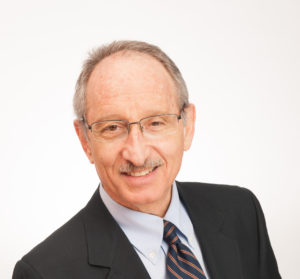 Jeremy Ruskin, MD
Jeremy Ruskin, MD
Dr. Jeremy Ruskin is Founder and Director of the Cardiac Arrhythmia Service at Massachusetts General Hospital and Professor of Medicine at Harvard Medical School. Dr. Ruskin received his undergraduate degree summa cum laude from Tufts University in 1967 and his medical degree cum laude from Harvard Medical School in 1971. He completed a residency in Internal Medicine at Beth Israel Hospital in Boston from 1971-1973 after which received his training in clinical cardiac electrophysiology at the USPHS Hospital in Staten Island, New York under the mentorship of Dr. Anthony Damato from 1973-1975. He then completed a clinic and research fellowship in Cardiovascular Disease at the Massachusetts General Hospital from 1975-1978.
In 1978, Dr. Ruskin founded the MGH Cardiac Arrhythmia Service and Clinical Electrophysiology Laboratory, the first subspecialty service dedicated to the care of patients with cardiac arrhythmias in New England and one of the first in the United States. Since its inception, the MGH Cardiac Arrhythmia Service has been a leader in cutting edge clinical care, the training of future leaders in clinical cardiac electrophysiology, and research on the mechanisms of and innovative therapies for the treatment of cardiac arrhythmias. As founder and director of the MGH Fellowship training program in clinical cardiac electrophysiology in 1978, Dr. Ruskin has been responsible for the training and mentorship for more than 110 clinical and research fellows in the subspecialty of cardiac arrhythmias over the past 37 years, many of whom are in leadership positions at academic centers throughout the world. Dr. Ruskin serves as a member of the FDA Cardiovascular and Renal Drugs Advisory Committee for 5 years and as a consultant to the National Center for Health Services Research and Healthy Care Technology Assessment. For the past twenty five years, he has worked extensively on the scientific and regulatory aspects of medical device and drug development as wells as cardiovascular drug safety. In 1995, Dr. Ruskin founded the Annual International Atrial Fibrillation Symposium which he has directed since its inception and is the largest and longest running free-standing academic meeting on atrial fibrillation worldwide, now entering its twenty first year.
Dr. Ruskin’s major research interests include the mechanisms and management of atrial fibrillation, new antiarrhythmic drugs and innovative technologies for catheter ablation of atrial fibrillation, the mechanisms and prevention of ventricular arrhythmias and sudden cardiac death, risk stratification for sudden death, the proarrhythmic effects of cardiac and non-cardiac drugs and cardiac safety issues in new drug and device development. He is an author of more than 400 original scientific publications, chapters, reviews, guidelines and monographs. Dr. Ruskin also maintains an active regional, national and international referral practice in the field of cardiac arrhythmias and electrophysiology and is recognized annually in Best Doctors in America and Best Doctors in Boston.
Dr. Ruskin is the recipient of the 1997 Michel Mirowski Award for Excellence in Clinical Cardiology and Electrophysiology and the 2002 Heart Rhythm Society Pioneer in Pacing and Electrophysiology Award.
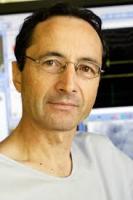 Michel Haïssaguerre, MD
Michel Haïssaguerre, MD
Born in Bayonne, France, in 1955, Professor Michel Haïssaguerre graduated in medicine in 1982 and specialized in cardiology in 1984. He is currently Professor of Cardiology at the University of Bordeaux and heads the Department of Cardiology-electrophysiology at the University Hospital of Bordeaux (Hôpital Cardiologique du Haut-Lévêque).
His scientific and clinical work focuses on cardiovascular electrophysiology, particularly on cardiac fibrillation. He is best known for his remarkable contributions in the area of atrial fibrillation ablation. He was the first to detect the importance of pulmonary vein triggers and drivers in the genesis of atrial fibrillation. In addition, he was first to propose the technique of pulmonary vein isolation, which underlies current methods used throughout the world for atrial fibrillation cure. His team has also demonstrated that Purkinje cells were the main triggers of human ventricular fibrillation, with or without heart disease.
In 2011, LIRYC project « L’Institut de Rythmologie et Modélisation Cardiaque » (Electrophysiology and Heart modeling institute), headed by Professor Michel Haissaguerre along with cardiology teams of the University Hospital of Bordeaux, is one of six French university hospital institutions created as part of the investments in the future program (“Investissements d’avenir”). LIRYC is a basic research, clinical and teaching centre focusing on the understanding, care and treatment of cardiac electrical diseases that lead to heart failure and sudden death.
Michel Haïssaguerre has published more than 500 publications in the leading peer-reviewed cardiology journals dealing mainly with radiofrequency current endocardial ablation of tachyarrhythmias. He serves on the editorial boards of many major journals of cardiology, including European Heart Journal, Circulation Arrhythmia, Europace, The Journal of Cardiovascular Electrophysiology, Journal of Interventional Cardiology, Heart Rhythm, and Pacing and Clinical Electrophysiology: PACE.
Michel Haïssaguerre enjoys an outstanding national and international scientific reputation. He has received numerous honors and awards, including the Prix Robert Debré (1982), the Prix de l’Information Cardiologique (1990), the Prix Ela Medical (1992), the Nylin Swedish Prize (2002), the Best Scientist Award Grüntzig 2003 (European Society of Cardiology), the Pioneer in Cardiac Electrophysiology award 2004 par la North American Society of Pacing and Electrophysiology (NASPE) – currently the Heart Rhythm Society, and the Mirowski Award 2009 for excellence in clinical cardiology and electrophysiology. In 2010, he received the Lefoulon-Delalande Price (Institut de France), the Louis Jeantet Prize for Medicine (Switzerland), and became a member of the Académie des Sciences; and the Distinguished Scientist Golden Lionel prize (Italy) was awarded to him in 2011. In 2012, he received the Award Grüntzig and the Prix Fondation Coeur et Artères. Eight of recipients of Louis Jeantet Prize have obtained later the Nobel Prize.
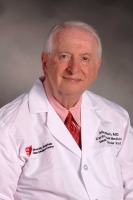 Albert Waldo, MD
Albert Waldo, MD
Albert L. Waldo, M.D is The Walter H. Pritchard Professor of Cardiology, Professor of Medicine, and Professor of Biomedical Engineering at Case Western Reserve University School of Medicine, Cleveland, Ohio. He is also Associate Chief of Cardiovascular Medicine for Academic Affairs at University Hospitals Case Medical Center. Dr. Waldo received his MD from the State University of New York College of Medicine, Downstate; and completed his postdoctoral fellowships in cardiology and cardiac electrophysiology at Columbia-Presbyterian Medical Center in New York City. He is a founding member and past president of the North American Society of Pacing and Electrophysiology (NASPE), now called the Heart Rhythm Society (HRS); and has served as president of the Cardiac Electrophysiology Society and the Ohio Chapter of the American College of Cardiology (ACC). He is a fellow of the ACC, the American Heart Association, the American College of Physicians, HRS and the American College of Chest Physicians. He is a member of several distinguished organizations, including the American Society for Clinical Investigation, the Association of American Physicians, the Association of University Cardiologists, and the American Physiological Society, among others.
Dr. Waldo’s research in the field of cardiac arrhythmias is well known. He has over 700 publications, and in 1997, one of his articles (Waldo AL, et al. Demonstration of the mechanism of transient entrainment of ventricular tachycardia with rapid atrial pacing. J Am Coll Cardiol. 1984;3:422-430) was selected by the ACC as one of 14 Historical Articles (influential articles previously published in ACC Journals) as part of the College’s 50thAnniversary Commemoration. He has participated in numerous clinical trials (65), including serving on steering committees, executive committees, planning committees, data and safety monitoring boards, or as principal investigator. In 1997, he received the Distinguished Scientist Award from NASPE, and in 2009, he received the Distinguished Scientist Award (Translational Domain) from the ACC. He has received both The William Dock Master Teacher Award in Medicine (2002) and the Distinguished Alumni Achievement Award (2012) from his medical school, an Award for Achievements in Clinical and Experimental Cardiology from The Foundation Hartsvrienden RESCAR of The Netherlands (2003), the Outstanding Achievement Award from the European Cardiac Arrhythmia Society (2006), the first Founders Lectureship Award from HRS (2007), the Michel Mirowski, MD. Award of Excellence in the Field of Clinical Cardiology and Electrophysiology (2007), the University Hospitals Case Medical Center Society of 1866 Distinguished Physician Award (2012), and the Pioneer in Cardiac Pacing and Electrophysiology Award from HRS (2013), among others.
Dr. Waldo’s extensive public service has included: committee membership on the National Heart, Lung, and Blood Institute’s Cardiovascular A and B Study Sections, the American Medical Association’s Diagnostic and Therapeutic Technology Assessment Program, and numerous committees of the ACC (including the Board of Governors), the AHA, and HRS/NASPE (including the Board of Trustees); consultant to the Circulatory System Devices Panel of the Medical Devices Advisory Committee of the FDA, and the Electrical Signaling, Ion Transport, and Arrhythmias (ESTA) Study Section of the NIH/NHLBI; and membership on the editorial boards of most peer reviewed journals in the field, including Circulation, J Am Coll Cardiol, Am J Cardiol, Pacing Clin Electrophysiol, J Cardiovasc Electrophysiol, J Electrocardiol, Heart Rhythm, Clin Cardiol, the audio journals of the ACC (ACCEL), and NASPETapes (of which he was editor-in-chief).
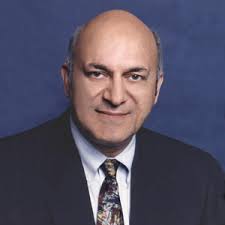 Masood Akhtar, MD, FACC, FACP, MACP, FAHA, FHRS
Masood Akhtar, MD, FACC, FACP, MACP, FAHA, FHRS
Masood Akhtar is Chief of the Cardiovascular Disease Section, and Director of the Arrhythmia Services. He is Director of the Clinical Cardiac Electrophysiology (3 fellows) and Cardiology (18 fellows) Fellowship Programs at Aurora Sinai Medical Center, representing the largest cardiovascular training program in the state. He formed Comprehensive Cardiovascular Care (CCC) Group, the largest group of combined cardiologists/electrophysiologists (44 physicians) in the Midwest. This group affiliated with Aurora Medical Group in December of 2008 and Dr. Akhtar now serves as Executive Medical Director of the Cardiovascular System Clinical Program. Dr. Akhtar is a board certified cardiologist and co-wrote the first three tests (ABIM) for the clinical electrophysiology boards.
Dr. Akhtar has been contributing to the medical literature since 1973; his CV now lists more than 230 original manuscripts (165 reviews, book chapters, monographs and books) articles published in peer-reviewed journals, more than 350 scientific abstracts presented at various national and international meetings. Some of his major research interests are implantable cardioverter defibrillators, radiofrequency ablation of supraventricular tachycardia and ventricular tachycardia, arrhythmias, and conduction disturbances. He has been an investigator in several clinical trials of new antiarrhythmic agents and is currently an investigator in trials of an automatic implanted defibrillator, an arrhythmia management device, and an implantable atrial defibrillator.
Ranked among the world’s preeminent electrophysiologists, Dr. Masood Akhtar was honored with the Pioneer in Electrophysiology Award (1999) by the Board of Trustees of the Heart Rhythm Society (formerly the North American Society of Pacing and Electrophysiology, or NASPE) of which he is a Fellow. He has been awarded Researcher of the Year by the Wisconsin Chapter of the American Heart Association in 1984 and has received numerous teaching awards from students and colleagues. He is also a member of the American Society for Clinical Investigation and a Fellow of the American College of Cardiology. He completed a term as President of the American Heart Association, Wisconsin Affiliate. He is. He is cited in The Best Doctors in America, 1992 to 1998 editions as well as the 2006-’07 edition; and in The America Midwest Regional Guide, 1996-1997 edition.
As a physician Dr. Akhtar is a national and international authority in the field of cardiac electrophysiology and remains an active physician within the group.
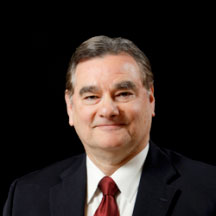 Warren M. Jackman, M.D.
Warren M. Jackman, M.D.
Autonomic Nervous System & Atrial Fibrillation Therapeutic Implications
Warren M. Jackman, MD is George Lynn Cross Research Professor of Medicine and Scientific Advisor of the Heart Rhythm Institute (HRI) at the University of Oklahoma Health Sciences Center. He obtained his medical degree from the University of Florida (1976) and Internal Medicine Residency at Wake Forest University (1976 to1979). He then served a Fellowship in Cardiology and Cardiac Electrophysiology at Indiana University School of Medicine from July 1979 through December of 1981. Dr. Jackman joined the faculty of the University of Oklahoma in January 1982.
His first grant as a junior faculty member was the Young Investigator Award from the American Heart Association Oklahoma Affiliate in 1983, which started his work in developing techniques for recording accessory pathway activation potentials in patients with Wolff-Parkinson-White syndrome. He and his coworkers played a significant role in the development of RF ablation by using these novel recording techniques to localize multiple types of accessory pathways (typical accessory pathways, epicardial posteroseptal pathways, epicardial anteroseptal pathways, and Mahaim fibers), slow AV nodal pathways (multiple variants of AVNRT), idiopathic LV tachycardia (Purkinje potentials) and Post-MI VT (mid diastolic potentials). In recognition of his research achievements Dr. Jackman was given the Provost’s Research Award and the honorary title of George Lynn Cross Research Professor at the University of Oklahoma Health Sciences Center in 1993. In 1982 he won first prize in the Young Investigator Award Competition of the North American Society of Pacing and Electrophysiology based on the research he had done in his Fellowship. In 2000 he received the prestigious award of Pioneer in Pacing and Electrophysiology from the North American Society of Pacing and Electrophysiology, the youngest person so honored in the history of the society, for his work in the development of catheter ablation techniques. He was the recipient of the 2006 Mirowski Award. He has been cited in Best Doctors in America continuously since 1992.
Dr. Jackman has held active roles nationally in Heart Rhythm Society (formerly the North American Society of Pacing and Electrophysiology). He has been a prominent international educator. He was the first director of the course on Advanced Catheter Ablation of Cardiac Arrhythmias of the American College of Cardiology given at the Heart House in Bethesda, Maryland between 1993 and 1999. He has been an instructor for the Advanced Course on Catheter Ablation of Cardiac Arrhythmias for the Heart Rhythm Society, since the Society took responsibility for the course from the American College of Cardiology. He was Co-Director of an Advanced Course In Catheter Ablation of Cardiac Arrhythmias presented by HRI at the University of Oklahoma Health Sciences Center in Oklahoma City from 1990 – 2007. He was also a Co-Director of a course on Minimally Invasive Surgical Ablation for Atrial Fibrillation taught at OUHSC from 2005 – 2007. He has lectured widely both nationally and internationally and has been an Investigator and Co-Investigator in grants from the American Heart Association, National Institutes of Health: National Heart Lung and Blood Institute, Oklahoma Health Research Program and the Whitaker Foundation as well as numerous grants from industrial sponsors for innovations in technology.
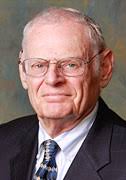 Melvin M. Scheinman, MD, FACP
Melvin M. Scheinman, MD, FACP
Director, Comprehensive Genetic Arrhythmia Program
University of California, San Francisco, CA
Dr. Melvin Scheinman is currently the Director of the Comprehensive Genetic Arrhythmia Program at the University of California at San Francisco. Dr. Scheinman is a board certified cardiac electrophysiologist with an extensive history of clinical care, teaching, and research contributions.
Dr. Scheinman has been actively publishing in the medical literature since 1966; his CV lists more than 480 original articles published in peer-reviewed journals, more than 275 scientific abstracts presented at various national and international meetings, over 70 books and book chapters, and a host of teaching materials. His major research interests are implantable cardioverter defibrillators, arrhythmias and conduction disturbances, particularly inherited arrhythmias.
He is considered by many to be a founding father in the field of cardiac electrophysiology. Dr. Melvin Scheinman has received numerous awards and honors from both national and international societies, including the Heart Rhythm Society and the American College of Cardiology. He has been the member of the editorial board for multiple peer-reviewed medical journals, and currently serves on the editorial board for Circulation.
Dr. Scheinman continues to remain an active researcher and educator, and is a national and international authority in the field of cardiac electrophysiology.
KCHRS 2024
Date
August 17 - 18, 2024
(Saturday and Sunday)
Venue
Hybrid & In-Person
Sheraton Overland Park Hotel & Virtual